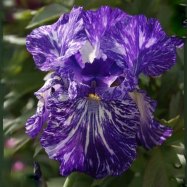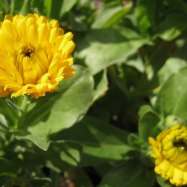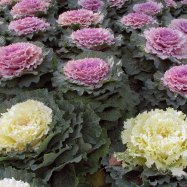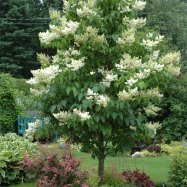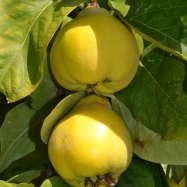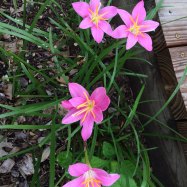
Marigold
Annual
Discover the vibrant world of Marigolds, Indonesia's beloved annual flower. With its bright shades of yellow, orange, and red, this member of the Asteraceae family adds a pop of color to any garden. Standing at up to 2 feet tall, Marigolds are easy to grow and are a great choice for beginners. Add these gorgeous blooms to your garden this season and enjoy their beauty all year round.
Summary of Plant Details:
Common Name: Marigold
Kingdom: Plantae
Habitat: Grasslands, forests, and disturbed areas
The Majestic Marigold: A Vibrant Beauty with a Rich History
Marigolds, with their vibrant colors and delicate blooms, have captured the hearts of gardeners and flower enthusiasts for centuries. They are a symbol of joy, positivity, and good fortune, making them a popular choice for gardens, decorations, and even weddings. But beyond its beauty and symbolism, this flower has a rich history, fascinating biology, and practical uses that make it a beloved plant among many cultures. Let's dive into the world of marigolds and discover what makes them so special Marigold.Scientific Name: Tagetes erecta
Common Name: Marigold
Kingdom: Plantae
Phylum: Spermatophyta
Class: Magnoliopsida
Order: Asterales
Family: Asteraceae
Marigolds, also known by their scientific name Tagetes erecta, belong to the plant kingdom and the Aster family. This annual herbaceous plant can reach up to 2 feet tall and has a body shape that resembles a small bush with vibrant and colorful flowers. These flowers come in various shades of yellow, orange, and red, making them a feast for the eyes and a popular choice for flower arrangements.
Habitat and Geographical Distribution
Marigolds are native to Mexico and Central America, where they grow abundantly in grasslands, forests, and disturbed areas. The country of Mexico is considered the birthplace of marigolds, and their name comes from the Aztec word "cempasuchil," meaning "flower of the dead," as they were often used in religious ceremonies and to decorate graves. From there, this beautiful flower was eventually spread and cultivated worldwide, making it a beloved plant in many countries and cultures.
Location and Growing Conditions
Marigolds thrive in full sun, making them a perfect choice for gardens and outdoor spaces that receive plenty of light. They can also tolerate a wide range of soil conditions, from dry to moist, as long as it is well-drained. This resilience and adaptability make them an easy-to-grow plant, suitable for both experienced and novice gardeners Mexican Orange.
The Marvels of Marigold Biology
Aside from their stunning appearance and cultural significance, marigolds also have some remarkable biological features that make them stand out from other flowers. For one, they are an annual plant, which means they complete their entire life cycle in one growing season, from seed to flower to seed production. This makes them an ideal choice for gardeners looking for a quick burst of color and beauty in their outdoor spaces.
Moreover, marigolds have a unique and interesting way of reproducing. They have two different types of flowers, those with male reproductive organs, and those with female reproductive organs. This allows them to self-pollinate, meaning they can fertilize themselves and produce offspring without the need for another plant's help. As a result, one marigold plant can quickly give way to a whole bed of marigolds, adding to their appeal for gardeners and flower enthusiasts.
Cultural Significance and Traditional Uses
Marigolds have been a significant part of many cultures and traditions for centuries. In Hinduism, they are known as the "herb of the sun" and are often used in religious ceremonies and festivals. In Mexico, marigolds are the national flower and are used in the annual festival "Dia de Muertos," or "Day of the Dead," to honor the souls of the deceased. They are also used for medicinal purposes, as they are believed to have anti-inflammatory and antioxidant properties, making them useful in treating ailments such as ulcers and digestive issues.
Practical Applications of Marigolds
Aside from their cultural significance and medicinal uses, marigolds also have practical applications that make them a staple in gardens and outdoor spaces. They are natural insect repellents and can protect other plants from pests, making them an excellent choice for companion planting. Additionally, marigolds are often used in organic gardening to help control plant diseases, making them a popular alternative to chemical pesticides and fungicides.
In the cosmetic industry, marigold flowers are a common ingredient in skincare products due to their anti-inflammatory and soothing properties. They are also used for cosmetics and food coloring as a natural and safe alternative.
Conclusion
Marigolds might seem like an ordinary flower at first glance, but as we delve deeper into its biology, cultural significance, and practical uses, it becomes clear that there is much more to this plant than just its striking appearance. From its rich history as a sacred flower to its useful applications in gardens and industries, marigolds have captured the hearts and minds of people worldwide. So, the next time you come across a bed of marigolds, take a moment to appreciate its beauty and all that it represents. After all, these vibrant flowers are a symbol of hope, joy, and the beauty of life.

Marigold
Plant Details Marigold - Scientific Name: Tagetes erecta
- Categories: Plants M
- Scientific Name: Tagetes erecta
- Common Name: Marigold
- Kingdom: Plantae
- Phylum: Spermatophyta
- Class: Magnoliopsida
- Order: Asterales
- Family: Asteraceae
- Habitat: Grasslands, forests, and disturbed areas
- Geographical Distribution: Native to Mexico and Central America, but cultivated worldwide
- Country of Origin: Mexico
- Location: Full sun
- Color: Yellow, orange, and red
- Body Shape: Annual herbaceous plant
- Size: Up to 2 feet tall
- Age: Annual

Marigold
- Reproduction: By seeds
- Behavior: Blooms in summer and early fall
- Conservation Status: Not applicable
- Use: Ornamental plant, used in traditional medicine and as a food additive
- Unique Features: Strong aroma and insect repellent properties
- Interesting Facts: Marigolds are often used in Day of the Dead celebrations in Mexico
- Type of Photosynthesis: C3
- Type of Root: Fibrous
- Maximum Height: Up to 3 feet tall
- Climate Zone: Tropical to temperate
- Soil Type: Well-drained
- Ecological Role: Attracts pollinators and beneficial insects
- Type of Reproduction: Sexual
- Flowering Season: Summer and early fall
- Water Requirements: Moderate

Tagetes erecta
The Versatile and Vibrant Marigold: A Plant Worth Knowing
When we think of summer and early fall, we often associate it with bright, vibrant colors and sweet, floral scents. One flower that perfectly embodies these characteristics is the marigold. With its strong aroma and insect repellent properties, this beautiful flower is more than just a pretty face. In this article, we will delve deeper into the unique features and interesting facts about the marigold, and learn why it is a plant worth knowing WebPolicial.Net.A Flower of Many Uses
The marigold, scientifically known as Calendula officinalis, is a bright, showy flower that belongs to the Asteraceae family. Native to southern Europe, the Mediterranean region, and parts of Asia, it is widely cultivated all over the world for its numerous uses. The most common use of this flower is as an ornamental plant. Its vibrant colors, ranging from bright yellow to deep orange, make it a popular choice for gardeners and florists alike.Apart from being a visually appealing flower, marigolds also have a long history of being used in traditional medicine. The petals are rich in flavonoids, which have anti-inflammatory and antioxidant properties. In traditional medicine, marigolds were used to treat various ailments such as skin irritations, ulcers, and even digestive issues. Recent studies have also shown that marigolds have potential anti-cancer properties, making it a promising avenue for further research.
In addition to its uses in medicine and gardening, marigolds are also commonly used as a food additive Miltonia Orchid. The bright petals of the flower are used as a natural food coloring, giving dishes a pop of color without any artificial ingredients.
Reproduction and Behavior
Marigolds reproduce through seeds, and they have a short flowering season in summer and early fall. They are known to have a strong scent that attracts pollinators such as bees and butterflies. The vibrant colors of the flower also make it a popular choice for these insects. Marigolds have a C3 type of photosynthesis, meaning they utilize carbon dioxide from the air to produce energy. Their roots are fibrous, allowing them to efficiently absorb nutrients from the soil.One of the unique features of marigolds is their insect repellent properties. The strong aroma of the flower makes it unappealing to pests such as mosquitoes, flies, and aphids. This makes marigolds a natural choice for pest control instead of using harmful chemicals.
Ecological Role and Conservation Status
Marigolds play an important ecological role in attracting pollinators and beneficial insects to a garden or farm. By providing a food source for these insects, marigolds help in maintaining a healthy ecosystem. Marigolds also act as a trap crop, attracting harmful pests away from other plants, protecting them from damage.As a widely cultivated plant, marigolds are not considered to be under any conservation threat. However, it is important to note that in the wild, marigolds are not found in their natural habitat, which could greatly impact their survival and genetic diversity.
A Plant with a Rich Cultural Heritage
Apart from its practical uses, marigolds also hold a special place in various cultures and traditions. In Mexico, marigolds are an essential part of the Day of the Dead celebrations. These flowers are believed to guide the spirits of loved ones to their altars, and their vibrant colors are thought to represent the sun and its life-giving properties.In Hinduism, marigolds are considered sacred and are often used in religious ceremonies and decorations. In India, marigold garlands are used to honor gods and goddesses and are placed on altars.
Growing and Caring for Marigolds
Marigolds are easy to grow and require minimal maintenance, making them a favorite among beginner gardeners. They thrive in well-drained soil and prefer moderate watering. Marigolds can grow up to 3 feet tall, depending on the variety, and are suitable for both tropical and temperate climates.To grow marigolds from seeds, start by preparing a well-drained soil bed. Sow the seeds directly into the soil and water them lightly. Keep the soil moist, and within a few days, you will see the seeds germinating. Once the seedlings have grown a few inches, thin them out to allow proper spacing for each plant. Marigolds also do well in pots and containers, making them a great choice for urban gardening.
In Conclusion
The marigold is truly a versatile and vibrant flower, with its strong aroma, insect repellent properties, and numerous uses. Its rich cultural heritage and important ecological role make it a plant worth knowing. Whether it's for its bright colors, medicinal properties, or as a natural pest control, the marigold has something to offer for all. So, the next time you come across a marigold, take a moment to appreciate its unique features and remember its fascinating history.

The Majestic Marigold: A Vibrant Beauty with a Rich History
Disclaimer: The content provided is for informational purposes only. We cannot guarantee the accuracy of the information on this page 100%. All information provided here is subject to change without notice.

